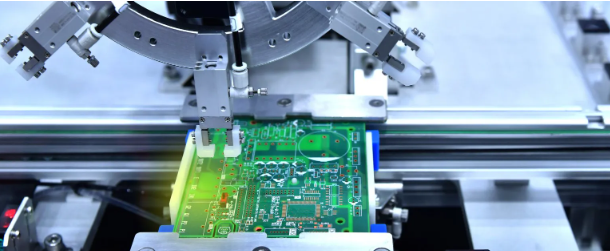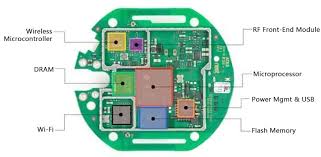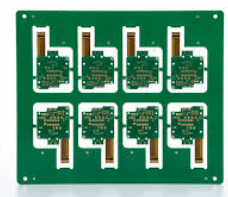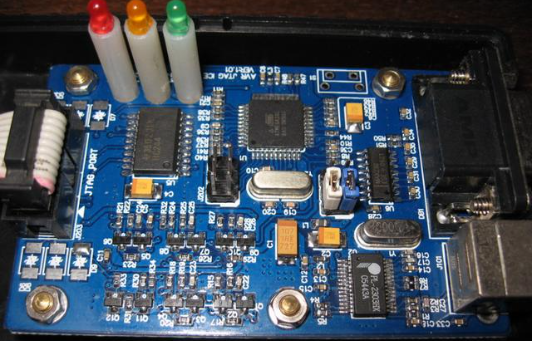Will PCB expire? Bake first after expiration?
Do you know “Why PCB must be baked before the SMT passes through the reflow oven after it expires and exceeds the shelf life”?
The main purpose of PCB baking is to remove moisture and remove moisture contained in the PCB or absorbed from the outside world, because the materials used in some PCBs can easily form water molecules.
In addition, PCBs may absorb moisture from the environment after being produced for a period of time, and water is one of the main causes of popcorn or delamination of PCBs. Because when the PCB is placed in an environment with a temperature exceeding 100°C, such as in a reflow oven, wave soldering oven, hot air leveling or hand soldering process, the water will turn into water vapor and then rapidly expand its volume.
When the PCB is heated faster, the water vapor will expand faster; when the temperature is higher, the volume of water vapor will be larger; when the water vapor cannot escape from the PCB immediately, there is a high chance that the PCB will expand. .
Especially the Z direction of the PCB is the most fragile. Sometimes it may break the vias between the layers of the PCB. Sometimes it may cause separation between the layers of the PCB. In more serious cases, it can even be seen on the surface of the PCB. Blistering, swelling, bursting and other phenomena;
Sometimes even if the above phenomenon is not visible on the outside of the PCB, it is actually damaged internally. As time goes by, it will cause the function of the electrical product to be unstable, or problems such as CAF will occur, eventually causing product failure.
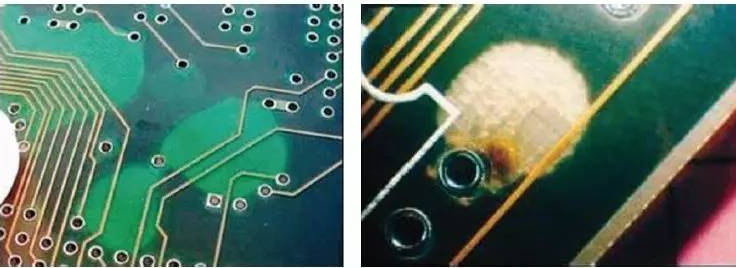
GET PCB MANUFACTURING AND ASSEMBLY QUOTE NOW!
Analysis of the real causes of PCB explosion and preventive measures
The process of PCB baking is actually quite troublesome. During baking, the original packaging must be removed before it can be put into the oven. Then it must be baked at a temperature exceeding 100°C, but the temperature cannot be too high, so as not to cause damage during baking. Excessive expansion of water vapor can burst the PCB.
Generally speaking, the industry sets the PCB baking temperature at 120±5°C to ensure that the moisture can really be eliminated from the PCB body before it can be soldered on the SMT line and passed through the reflow oven.
The baking time varies with the thickness and size of the PCB. For thinner or larger PCBs, the board must be pressed with a heavy object after baking. This is to reduce or prevent the PCB from The tragic occurrence of PCB bending and deformation due to stress release during cooling after baking.
Because once the PCB is deformed and bent, there will be problems such as offset or uneven thickness when printing solder paste on SMT, which will also cause a large number of soldering short circuits or empty soldering during subsequent reflow.
PCB baking condition setting
At present, the industry generally sets the conditions and time for PCB baking as follows:
1. If the PCB is within 2 months of the manufacturing date and is well sealed, and has been placed in a temperature and humidity controlled environment (≦30℃/60%RH, according to IPC-1601) for more than 5 days after being unpacked, it must be Bake at 120±5℃ for 1 hour.
2. PCB is stored for 2 to 6 months beyond the manufacturing date and needs to be baked at 120±5℃ for 2 hours before going online.
3. PCB is stored for 6 to 12 months beyond the manufacturing date and needs to be baked at 120±5℃ for 4 hours before going online.
4. It is basically not recommended to use PCBs stored for more than 12 months beyond the manufacturing date, because the adhesive force of multi-layer boards will age over time, and quality problems such as unstable product functions may occur in the future, which will increase the need for repairs in the market. probability, and the production process also has risks such as board explosion and tin failure. If you have to use it, it is recommended to bake it at 120±5℃ for 6 hours. Before mass production, try printing a few pieces of solder paste to make sure there are no solderability problems before continuing production.
Another reason why it is not recommended to use PCBs that have been stored for too long is because the surface treatment will gradually lose effectiveness over time. For ENIG, the industry’s shelf life is 12 months. After this period, the immersion gold layer will be damaged. It depends on the thickness. If the thickness is thinner, the nickel layer may appear on the gold layer due to diffusion and form oxidation, which will affect the reliability. Do not be careful.
5. All baked PCBs must be used within 5 days. Unprocessed PCBs must be re-baked at 120±5℃ for another hour before going online.
How to stack PCB when baking
1. When baking large-size PCBs, lay them flat and stack them. It is recommended that the maximum number of pieces in a stack should not exceed 30 pieces. Within 10 minutes after baking, you need to open the oven, take out the PCBs, and lay them flat to cool. After baking, you need to press them. Anti-board bending fixture. It is not recommended to bake large-size PCBs in an upright position as they are prone to bending.
2. When baking small and medium-sized PCBs, they can be laid flat and stacked. It is recommended that the maximum number of pieces in a stack should not exceed 40 pieces. They can also be placed upright, with no limit on the quantity. The oven must be opened within 10 minutes after baking is completed, and the PCBs must be taken out and laid flat. Let it cool, and then press the anti-bending jig after baking.
Precautions when baking PCB
1. The baking temperature cannot exceed the Tg point of the PCB, and the general requirement is that it cannot exceed 125°C. In the early days, the Tg point of some lead-containing PCBs was relatively low. Nowadays, the Tg points of lead-free PCBs are mostly above 150°C.
2. The baked PCB should be used as soon as possible. If it is not used, it should be re-vacuum packed as soon as possible. If exposed to the workshop for too long, it must be rebaked.
3. Remember to install exhaust drying equipment in the oven, otherwise the water vapor will remain in the oven and increase its relative humidity, which is not conducive to PCB dehumidification.
4. From a quality point of view, the fresher the PCB solder is used, the better the quality will be after it has been baked. Expired PCBs will still have certain quality risks even if they are baked before use.
GET PCB AND ASSEMBLY SERVICE QUOTE NOW!
Recommendations for PCB baking
1. It is recommended to use a temperature of 105±5℃ to bake PCB, because the boiling point of water is 100℃. As long as it exceeds its boiling point, water will turn into water vapor. Because PCB does not contain too many water molecules, it does not require too high a temperature to increase its vaporization speed.
If the temperature is too high or the vaporization speed is too fast, it will easily cause the water vapor to expand rapidly, which is actually detrimental to the quality, especially for multi-layer boards and PCBs with buried holes. 105°C is just above the boiling point of water, and the temperature is not too high. , can dehumidify and reduce the risk of oxidation. Moreover, the temperature control capabilities of current ovens have been much improved than before.
2. Whether the PCB needs to be baked depends on whether its packaging is damp, that is, whether the HIC (Humidity Indicator Card) in the vacuum package has shown that it is damp. If the packaging is good, the HIC does not indicate that it is damp. It can be put online directly without baking.
3. When baking PCB, it is recommended to use “upright” baking with intervals, because this can maximize the effect of hot air convection, and it is easier for moisture to be baked out of the PCB. However, for large-size PCBs, you may have to consider whether the upright configuration will cause board bending and deformation problems.
4. After the PCB is baked, it is recommended to place it in a dry place and allow it to cool quickly. It is best to press an “anti-board bending jig” on the top of the board, because general objects tend to absorb moisture during the process from a high-heat state to cooling. , but rapid cooling may cause plate bending, which requires a balance.
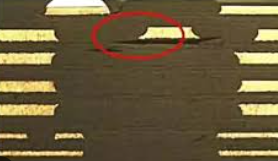
Disadvantages of PCB baking and things to consider
1. Baking will accelerate the oxidation of the PCB surface coating, and the higher the temperature and the longer the baking time, the more disadvantageous it will be.
2. It is not recommended to bake OSP surface-treated boards at high temperatures because the OSP film will degrade or fail due to high temperatures. If baking is necessary, it is recommended to bake at a temperature of 105±5℃ for no more than 2 hours. It is recommended to use it within 24 hours after baking.
3. Baking may have an impact on the formation of IMC, especially for boards with surface treatment of HASL (spray tin) and ImSn (chemical tin, immersion tin plating), because the IMC layer (copper-tin compound) has actually been formed as early as the PCB stage. Generation, that is, it has been generated before PCB soldering. Baking will increase the thickness of this layer of generated IMC, causing reliability problems.


